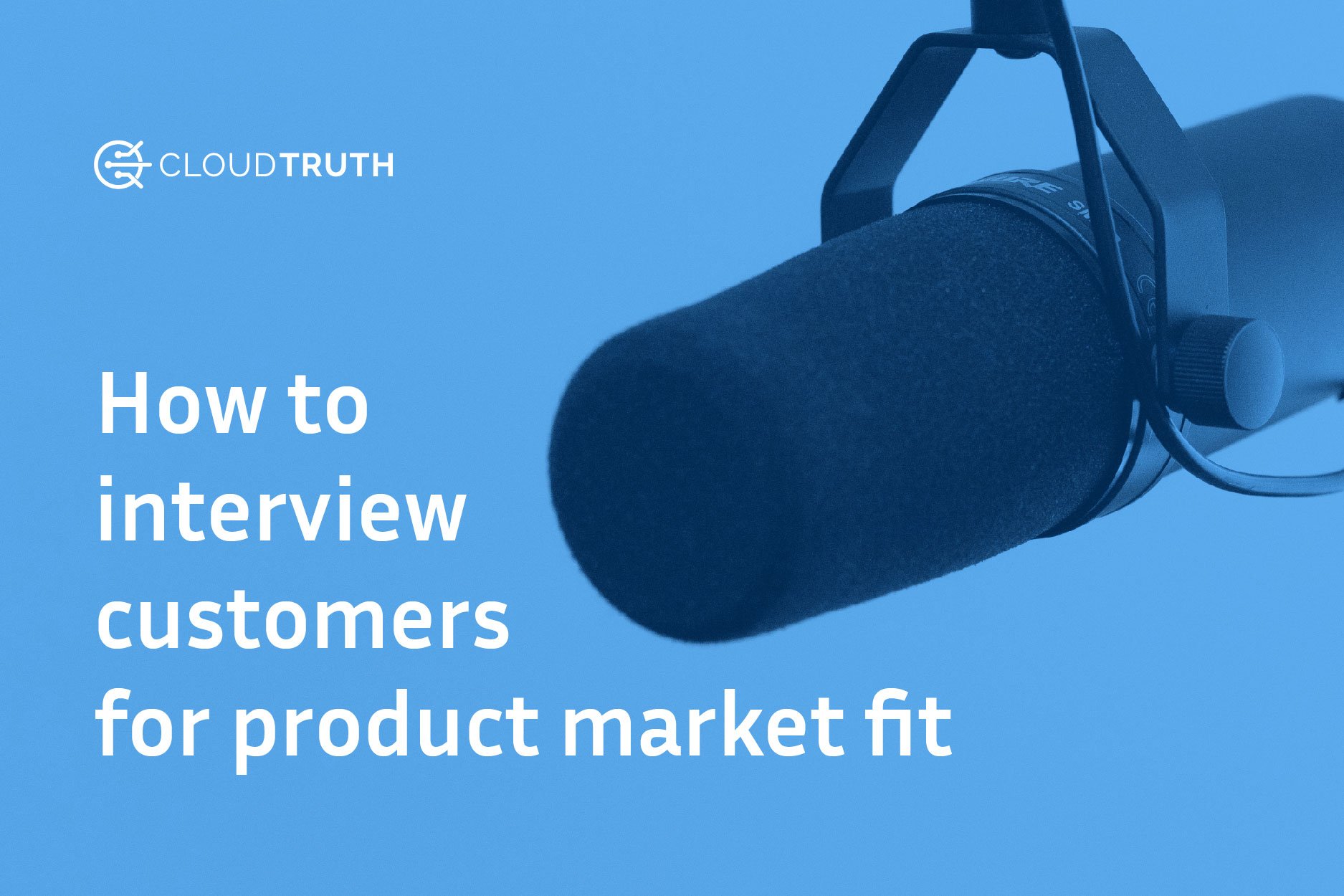
This is the fourth post of seven – “The CloudTruth Journey to Product-Market Fit” series.
No matter what industry you’re in, finding product-market fit is essential to the success of any company. But what does it take to get from a good idea to a viable business?
Ultimately, building a good product starts with understanding your customers — and to do that, you’ve got to talk to them. As a part of CloudTruth’s path to product-market fit, my team and I conducted more than 400 interviews with friends, contacts, potential customers, advisors, and more. Our approach to conducting these interviews followed a 4-step plan, in which we spent more than a year narrowing down to the market niche and product that were the best possible fit for our business. And of course, there’s still much to learn — but this process has been incredibly valuable to our team, and has helped us develop a great product with a strong and growing customer base. Below, I’ve described the rough outline of our approach, which I hope may be useful to other companies embarking on the product-market fit journey.
Phase 1: Leveraging Personal Networks
When we were just starting out, my co-founder and I began reaching out to our first-degree connections to get some high-level input. Since these were our personal contacts, we had a fairly high response rate, and people tended to be very generous with their time. As such, this group was a highly effective starting point, offering a sounding board for our early market exploration. These early-stage interviews helped us to define a rough sense of what our target market might look like, and what types of pain points our potential customers experienced that we might be well-positioned to address.
However, since in this phase, we were limited to people we knew directly, these interviewees weren’t necessarily a perfect match with our target customer profile. Plus, this was a relatively small group, and to make meaningful decisions as to the direction of our company, it was important for us to have access to a more comprehensive data set. To address these limitations, we expanded fairly quickly into the second phase of our plan.
Phase 2: Targeting Specific Customer Profiles
Based on our Phase One conversations, we began to narrow down to more specific customer profiles. We developed lists of keywords and job titles that corresponded to these profiles, as well as target company sizes, industries, and locations. We then used LinkedIn’s Sales Navigator tool to identify potential matches outside our immediate networks, and sent them a contact request with a short note along these lines:
Hi [Name],
I’m pre-launch on a new cloud configuration idea and doing product-market fit interviews. Your background makes me think you would be a good fit. Would you be willing to donate 20 minutes for a brief Zoom meeting?”
Thanks so much,
Greg
We prioritized second and third-degree connections in this phase, and we made sure to keep our messages short and appreciative (after all, we were asking strangers to donate their most valuable resource: time). Still, unsurprisingly, our response rate was much lower than when contacting our personal networks. Given that, if someone didn’t respond, we didn’t pour lots of time and resources into nurturing them — we’d just move on to another candidate.
The goal in this phase was to go a mile wide and an inch deep: We wanted to talk to as many people as possible, as quickly as possible. At this point, we weren’t that invested in interviewing any particular person or company, but instead, we wanted to reach a large group of people whose roles and company types fell into our general target area. Eventually, as we think about shifting our focus from exploratory market research to a more concerted sales effort, it will no doubt make sense to pursue more specific people and accounts — but during the early product-market fit process, such a level of specificity would have been a waste of time.
Phase 3: Prioritizing Scalability
As we expanded our interview base, it became infeasible to schedule live meetings with everyone. To gather as much data as possible while making the best use of our limited resources, we developed a 10-minute introductory video and self-guided survey, enabling us to get valuable feedback without a real-time interview. We could then follow up with high-priority respondents in person, but we were able to save significant time and resources by essentially screening interviewees with an automated first pass.
Interestingly, when given the choice, many people preferred a live interview rather than the self-guided option. But for some people, it was more palatable to simply submit feedback on their own time, rather than having to find time in their busy schedules for a 30-minute call. As such, having the flexibility to offer multiple options ultimately helped us reach more people and gather more data than a traditional interview process alone.
Phase 4: Demoing a Prototype
Finally, once we arrived at a rough understanding of a potential target market and product, we began to transition from simply gathering feedback on general concepts to demoing an actual prototype application. At first, these prototypes were extremely limited, enabling us to just convey our rough product idea with some high-level features. But as we further refined our target customer and product requirements, we built more and more robust prototypes, which made it possible for us to receive more and more granular, specific feedback. This feedback in turn informed the development of ever-more detailed demos, creating a virtuous cycle that got us closer to true product-market fit with each iteration.
***
When it comes to finding that elusive match between a product and a customer base, there aren’t any one-size-fits-all solutions. The specifics of who you should interview, what types of questions will be most informative, and at what point it may be helpful to start demoing a product will vary. But the general process — starting with high-level interviews with a few closer contacts, expanding to a wider base focused on key customer profiles, developing scalable interview tactics, and ultimately, soliciting increasingly concrete feedback through a demo or mockup product — is likely to serve you well no matter your industry.
To learn more about CloudTruth’s journey to product-market fit, take a look at this recent blog post on our approach to the PMF process. And if you’d like to learn more about the product we’ve focused on through this process, check out our white paper, or sign up for our early access program today!
Read the next article in our “CloudTruth Product Market Fit” series:
Tips and Tricks for Optimizing Your Product-Market Fit Interviews
Join ‘The Pipeline’
Our bite-sized newsletter with DevSecOps industry tips and security alerts to increase pipeline velocity and system security.


